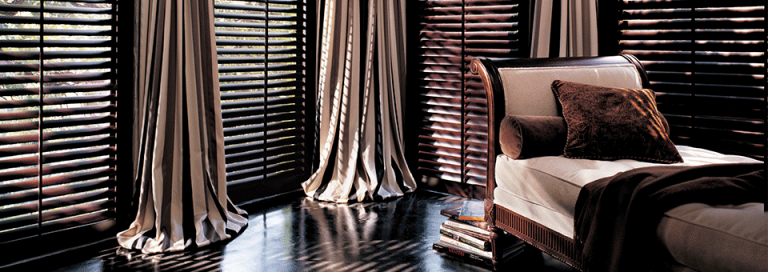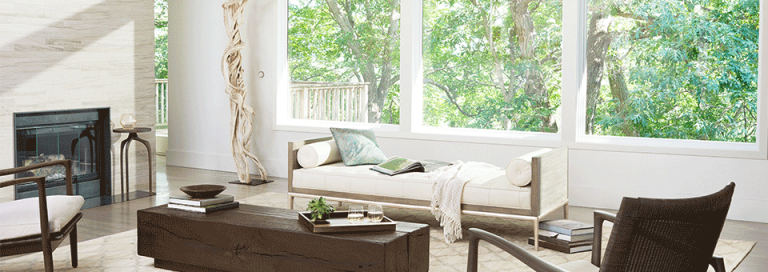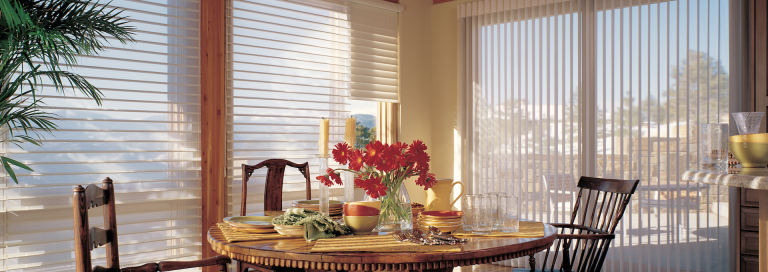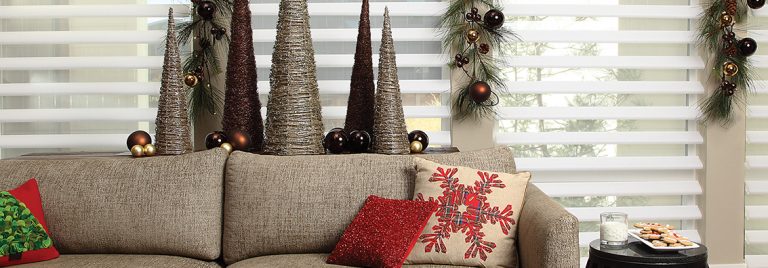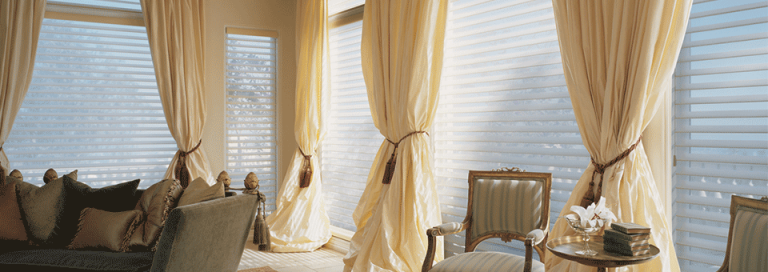Are you looking to refresh your home? There’s really no better way to energize and enliven your rooms than with a boost of style. Why not try drapery panels? They’re sophisticated, gorgeous, and will add fashionable elegance to all of your spaces. Colors, designs, and textures beautifully frame your windows while flowing fabrics add dimension and function you’ll love. If you’re longing to refresh and heighten the style of your home, take a look at the effect of drapery panels in these different rooms, and get inspired to bring them into your own spaces!
Window Shades
3 Things Privacy Blinds and Shades Can Do for You
Privacy and comfort–they go hand-in-hand. In order to feel comfortable in your home, you need to have options for privacy. Sure, there might be …
From Bare Windows to Brilliant Atmosphere
When it comes to your home, atmosphere and comfort are everything. Are you living with bare windows? Do you have window treatments, but maybe …
Window Treatments Kansas City?
Silhouette® window shadings & Luminette® Privacy Sheers Have you been typing ‘window treatments Kansas City’ into Google, hoping for inspiration? With the incredible amount …
Roman Shades = Energy + Smart + Style
The classic tradition of roman shades offers your home tremendous elegance and beautiful function. With the latest innovations, roman shades have received upscale upgrades …
The One Stop Decorating Warehouse: It’s a Behind-the-Scenes Sneak Peek!
“The greatest achievement was at first–and for a time–a dream. The oak sleeps in the acorn, the bird waits in the egg…Dreams are the seedlings of realities.” ~ James Allen
It’s been over 20 years since we first opened One Stop Decorating. Originally from the Kansas City area, we moved back here in hopes of raising our family and starting this business in the close knit community we’ve always called home. Since opening our doors in 1995, we have enjoyed being an integral part of your lives–our loyal clients–and we can’t wait to see what the future holds. That’s why we want you to be the first to hear our exciting news! We have opened the very first One Stop Decorating warehouse!
Shop Small This November 28th
Small businesses. They are the backbone of your community, and you are the heart that keeps them thriving. Support locally-owned stores, and your neighborhood, on Small Business Saturday. This year, the holiday gifts you buy can bring joy to more than just your friends and family. When you shop small at local businesses on November 28th, you can make a tremendous impact in your community and in your own life.
Soft Shutters: The Beauty and Sophistication of Pirouette and Silhouette Window Shades
Traditions fill our Kansas City area homes during the holidays. Whether gathering for a feast around the table, sending cards, or giving gifts, traditions …
Fall Style: Rustic Decor & Window Treatments That Stun
The beautiful season of autumn is here–invite the warmth and richness of fall into your Kansas City area home with the latest design trend. Without question, rustic decor is enhancing the look and feel of homes with its shabby chic charm and stunning sophistication. Using pieces throughout your home, from furniture to window treatments–and everything in between, find your own way of inviting autumn in with this unique look. Colors, materials, textures and finishes combine for comfort and relaxation, setting the perfect atmosphere this fall.
Window Shades for Your Style Personality
Decorating your house to feel like a home is one of the most important investments you can make. From colors that complement, to accents …

